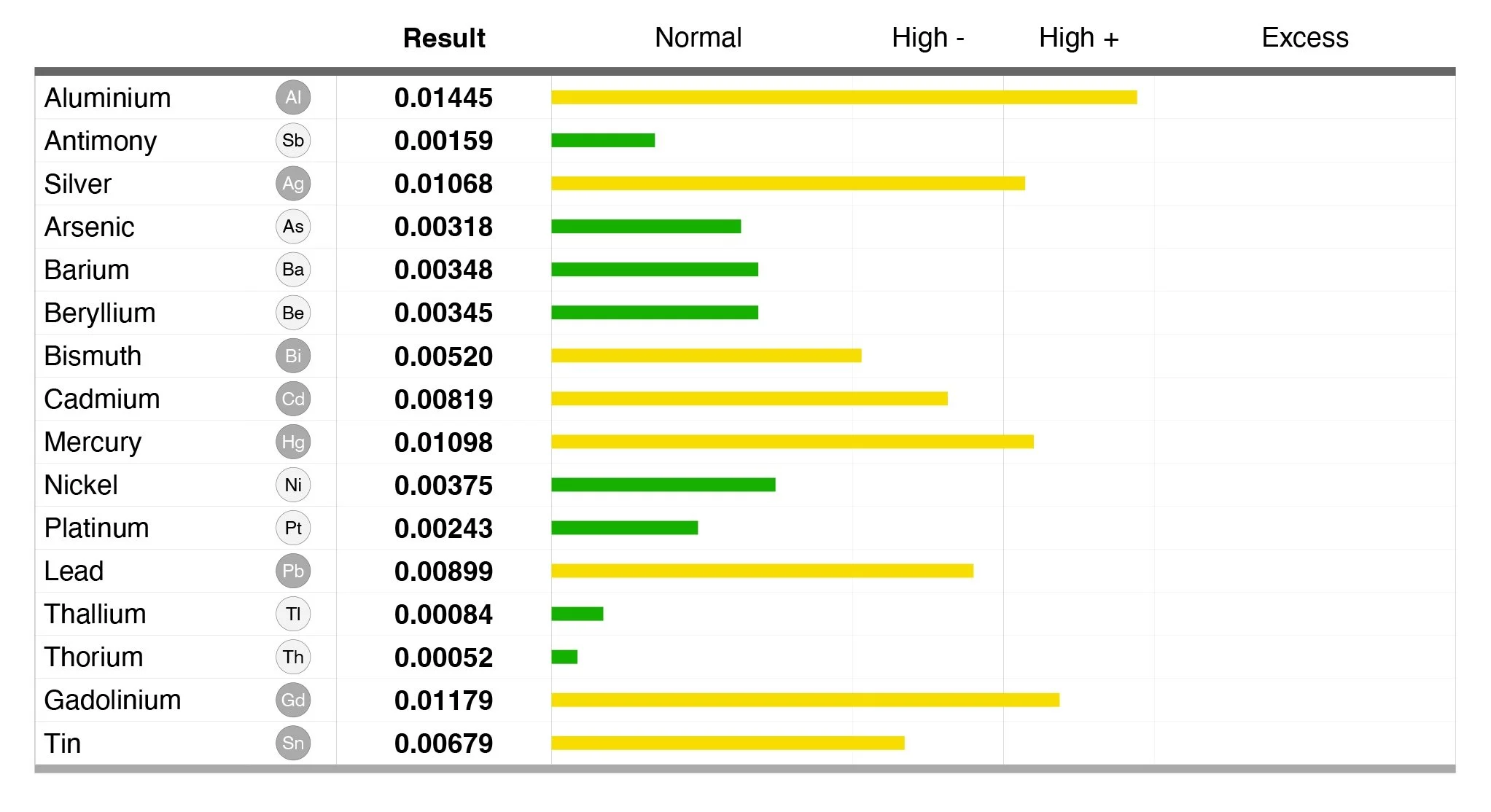
Mineral/Metal Analysis
A More Comprehensive Picture
Purus Health analyzes minerals and heavy metals using spectrophotometry to individualize and direct treatment.
Spectrophotometry
In seconds, this intracellular non-invasive scan measures the tissue of the palm of your hand. We scan for 43 elements (21 minerals, 16 heavy metals, and Vitamins A, B6, B9, B12, C, D, and E). It indicates what minerals and vitamins the body is absorbing and using, not what is just circulating in the bloodstream. Spectrophotometry can also give us a general idea of liver, thyroid, gut, and bone health, as well as blood sugar issues, detox issues, and the possibility of having parasites, candida or mold.
As a scientific technique, spectrophotometry dates back to the 19th century and uses light to analyze various elements as an object reflects or absorbs the light. This test can read a person's toxic load and how they absorb minerals and vitamins.
Spectrophotometry is used in many industries: chemicals, pharmaceuticals, environment, food, biology, medical/clinical, industrial, and others. NASA uses spectrophotometry to analyze the composition, temperature, and other properties of celestial objects, such as stars, and galaxies, as well as the Earth's atmosphere and surface. In the medical field, spectrophotometry is used to examine blood or tissue.
Shows the intracellular accumulation of heavy metals & the uptake of bioavailable minerals, namely through the tissue (including muscle & small capillaries), at a depth of 4mm through the skin. Mineral levels obtained in the epithelial cells are samples from an extended local stay in the cells, which corresponds more accurately to the mineral concentration (level) observed in all living tissues.
What is the difference between spectrophotometry and other tests?
Blood Testing
Blood tests show what is currently in your circulatory system. A blood test will not reveal heavy metal status because the body stores these elements to protect vital organs, therefore they may not be present in the bloodstream. Also, vitamins and minerals may be present in the bloodstream but not being utilized by the cells. Spectrophotometry indicates how the body absorbs and uses them at the cellular level. Blood testing and spectrophotometry can be used together to provide more detailed information.
Hair Mineral Analysis Testing
Represents what the patient has excreted in the past three months, via epithelial tissue (hair). However, If a person is a poor excreter, like many individuals who are chronically ill, the toxic elements may appear under-represented in hair tissue compared to spectrophotometry.
Urine Testing
A urine test also depends on a person’s ability to excrete, and shows to what extent the body can remove metals. In a healthy sample, almost nothing is excreted. When the body is provoked (e.g. EDTA, DMPS, DMSA), increased metal concentrations can be found. Although this test may be useful in some instances, it does not give a robust picture of what is happening at the cellular level.
Client Examples
Below are three examples of client’s scans:
This is a scan of a 78 year old male with dementia who has steadily been declining over the past six months. He presents…
Example 1
This 19 year old young adult is carrying a toxic load. He has symptoms of acne, fatigue, and waking unrefreshed…
Example 2
Example 3
This is a 72 year old female, who has low bone density or osteopenia. She recently broke a bone and it took…



